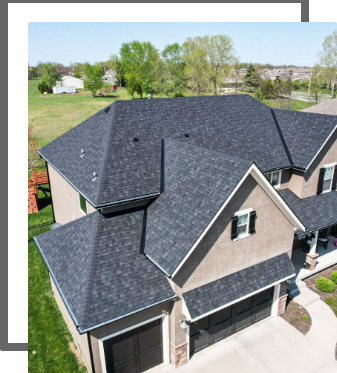Both siding and gutter installation are offered year-round. After all, when these important features fail, entire homes face the risk of moisture damage, pest infestation, and more. However, carefully timing these projects will help you save money and ensure an optimal outcome. If you need new siding or gutters for your Lenexa, KS home, the following are the best times to schedule these improvements.
Early Spring Offers the Perfect Break in Severe Weather for New Gutters
If your gutters are already bent, leaking, separating at their seams, or pulling away from the building, there’s never a bad time to replace them. In fact, doing so mid-winter could keep these structures from detaching from your home entirely and causing damage to nearby structures like your AC or heat pump condenser.
While some seamless gutter systems are expected to last a century or more, most standard gutters last about two decades. If you know that these features are nearing the end of their lifespan and want to swap them out before they actually fail, the best time to do so is in summer. The warm, predictable weather of summer makes it easy for roofers to mount ladders, detach old gutters and downspouts, take essential measurements, and install new rooftop drainage systems.
It’s important to note that summer is when most homeowners schedule gutter replacement. Thus, you can expect higher demand for labor and materials and a slight rise in prices for both. To sidestep this additional spending, you can always schedule your appointment in late spring when the weather is more moderate and when fewer homeowners are investing in pre-winter maintenance and improvements. In either case, installing new gutters before autumn and winter arrive will prepare your roof’s drainage system for the seasonal influx of dead leaves, twigs, and other tree-fall.
Summer Is Also a Great Time to Invest in Gutter Protection
Installing new gutters in summer will also give you the chance to explore your options in gutter protection. Whether choosing gutter covers, brushes, or mesh, you can minimize your year-round gutter maintenance and keep rainwater and snow-melt moving in the right direction. Depending upon the slope of your roof, your roofing materials, and the type and amount of attic insulation currently installed, you can additionally inquire about gutter heaters. These accessories prevent ice-damming and promote rapid thawing of ice, snow, and slush.
Fall Is the Top Choice for New Siding Installation
High temperatures and increased humidity in summer make the season less than ideal for new siding installation. Spring rains, winter snow, and issues with thawing rule out the months of November through June. According to most roofers, the best time to replace siding is in fall, when the weather is moderately cool and relatively dry. For vinyl siding, scheduling installation during times of low humidity and slightly cooler weather can extend its lifespan and promote better aesthetic and structural results.
However, in the much colder temperatures of winter, vinyl and other siding materials become brittle, lose their flexibility, and develop an increased risk of cracking or sustaining other installation-related damage. Cold temperatures also cause these same siding materials to contract. Contraction complicates many parts of the installation process, including taking accurate measurements and cutting siding materials correctly. When the weather warms up and your siding expands, you might contend with joint problems or incorrect panel spacing. Temperature-related expansion poses similar challenges in summer.
Notwithstanding these things, many homeowners still schedule siding replacements in late spring and summer. This minimizes the demand for siding installation in autumn and often leads to faster response times and lower prices for those who are willing to wait.
What to Do If Your Siding Fails Before Fall Arrives
Apart from expansion and contraction, outdoor moisture is the biggest weather-related concern when it comes to siding replacement. Lenexa gets approximately 16 inches of snow each year which allows for a wet winter and an equally wet early spring. In years with heavy snowfall and lots of snow-melt, you might have little time between the last winter storm and the first rains of spring to swap your siding out. Fortunately, local rainfall is usually heaviest in June. Thus, if your siding is warped, loose, cracked, or riddled with pests and cannot wait for autumn, you should schedule siding replacement between February and May while targeting temperate, low-humidity days.
We help residents of Lenexa, KS protect, maintain, and beautify their homes. We offer roof inspection, replacement, and repair services. We also provide siding installation, gutter installation, window replacements, and exterior painting. To find out more or schedule an appointment, contact HT Roofing & Construction today.
